CURIOUS CAT:Hello, children. Where have you been?
GIRL #1:Hello, Curious Cat. We've just came back from playtime.
CURIOUS CAT:Oh, you must be very cold out there if you have those woolly scarves on.
GIRL #2:Yes, it was cold out there, but the scarves kept us nice and warm.
CURIOUS CAT:Woolly scarves are great for cold days, but have you ever wondered how your scarves were made?
GIRL #1:Doesn't wool come from sheep?
CURIOUS CAT:Yeah, that's right. It all starts with sheep.
CURIOUS CAT:'Look at all these sheep. A lot of the sheep have long woolly coats. 'These are called fleeces. Once a year, the sheep need their woolly coats clipped off. this is called shearing. It's a bit like having your hair cut. It doesn't hurt the sheep. The sheep's wool has grown very long and thick, too hot for summer.
CURIOUS CAT:'The sheep's fleece is sheared very close to the sheep's skin so it all comes off in one piece. It doesn't hurt, and the wool grows again to keep the sheep warm in winter. When the sheep have been sheared, the fleeces are packed, ready to be sent away.'
CURIOUS CAT:To find out what happens next, you'll have to go to the wool mill, where James will show you around. Off you go.
JAMES:So this is where the fleeces have come from the farm, at this table, and this is where Pete does the sorting. And so he basically sorts it into all the different types of wool.
GIRL #1:Why do you do this?
JAMES:Why do we do this?
GIRL #1:Yeah.
JAMES:Well, we do this because different wools are used for different things. There's wools that are used for carpets, for rugs, scarves. Different types of wool will give you a different effect, and it will give you different finished products. Would you like to help with the sorting?
GIRL #1:Okay.
GIRL #2:Yeah.
GIRL #1:Yeah.
WOOL WORKER:What I do is, when I'm pulling this, that's called the staple, and I'm pulling it to test how long it is, and the strength, if it's a strong one, it'll go into better grade. And this one is really strong.
GIRL #1:That's very strong.
GIRL #1:I've done it. I've done one.
WOOL WORKER:Yeah.
CURIOUS CAT:'Sorting the wool is a very important job. make sure you're listening.'
GIRL #2:That one was easy.
GIRL #1:Oh, look at that one.
WOOL WORKER:That one's soft.
GIRL #1:Oh. Well, that's a–
WOOL WORKER:That's like cotton wool, isn't it?
GIRL #1:That's an easy one.
GIRL #2:This is really easy to pull apart.
WOOL WORKER:That's a wool and that's a Suffolk. That gets used for your clothes and knitwear, because it's so soft.
GIRL #1:That's a softer one.
WOOL WORKER:You like the feel of that one?
GIRL #1:Yeah.
GIRL #2:Yeah.
WOOL WORKER:That's better, isn't it?
CURIOUS CAT:'Come on, girls, there's a lot more to see. Let's get a move on.'
JAMES:So these are the fleeces that have been sorted. This is going into carpets. This is a lot softer and will go into clothing of all different sorts.
GIRL #2:Why is it shiny?
JAMES:Just like your hair, there are different colours, there are different shines, different textures, exactly the same with sheep.
GIRL #2:And why do they shave the sheep? They could just leave it on the sheep.
JAMES:For the health of the animal, you have to shear the wool, so it has to be sheared off the sheep for its well-being.
CURIOUS CAT:'Sheep are sheared in the spring so they can stay nice and cool in the summer. The wool has now been sorted and is ready to be washed and cleaned. This is called scouring.'
JAMES:So, what we have here is where we've just come from, where you saw the wool being sorted. Yes, this is all the wool.
GIRL #1:Yeah?
JAMES:So it's all coming into here, and then it goes off down this line to be washed. So we'll walk down the line and we'll show you what at which stage is it washed.
GIRL #1:Let's go.
JAMES:Come on, then.
JAMES:In here, what you've got is all the grease, and all the dirt is washed out in this bowl here, so it's squeezed here with rollers and goes up to the next bath.
GIRL #1:It's very hot in here.
JAMES:It is very hot in here.
GIRL #1:Yes.
GIRL #2:My legs are sweating.
JAMES:Now this bath here, this is where we add soap. So there's lots of soap in that bath. So it's washing all the wool, and washes all the sweat and everything else out of the wool in this bath. So this has got soap in it, and again, squeezed, and it comes on to the next bath where it's rinsed, which is what you do when you've washed your hair, you rinse it, you rinse the soap out. And then the last thing after that, it's being rinsed, and then it goes off to the dryer at the far end. The wool is then dried.
CURIOUS CAT:'This is where the washed wool comes to be dried. It looks like the biggest hairdryer ever.'
JAMES:The wool you see here is the wool that has come from the drying that we saw earlier. It's now put on this conveyor belt here, and it goes through the conveyor belt and into the carding machines, which are basically very big drums with metal wire on them that are moving at a very high speed. And what they do is to take all the rubbish out of the wool, so this is what comes out. So you have straw, you've got grass, you've got seeds. There's all sorts in there that we need to take out so it doesn't get into the finished product. Now, how they used to do carding in the old days, these have got wire on them, so what they do is they you would put the wool on, and you'd put one on top of the other, and you'd pull them apart, and this is how they used to do it going back many years. Which is a very long process. Now, obviously, there's so much wool, we have to do it by big machines.
GIRL #1:It's a good job they've invented these machines then.
JAMES:It is indeed.
GIRL #2:Cool.
GIRL #1:I feel like diving in it.
JAMES:I know.
GIRL #2:It was all dirty before. Now it's just really clean in little bunches. It's really weird.
GIRL #1:I really feel like diving in it and swimming.
CURIOUS CAT:'The wool has now been washed, dried, and carded. James has taken the girls to the spinners to see how it's turned into long strings of twisted wool known as yarn.'
JAMES:Shall we see it running?
GIRL #1:Yeah.
GIRL #2:Yeah.
JAMES:Okay. Let's turn the machine on.
CURIOUS CAT:'These machines stretch the wool to make it thinner, and then they twist the wool to make it into yarn, ready for knitting.'
JAMES:So this is the wool that you've seen being spun and twisted, and now, what I'm gonna do is show you the technique for finger knitting that you can then do and make your scarf from, okay? And then you put the yarn between those fingers and then back round, and you go round your pinkie finger, and you go back under, over, under, all the way around.
GIRL #2:I've started to knit a scarf.
JAMES:Yeah, you started.
JAMES:You go under.
GIRL #1:Under, over.
JAMES:Over. Round your pinkie, back under, over.
GIRL #1:Oh, I get it.
JAMES:That comes up and over, up and over.
GIRL #1:It's so easy when you know how to.
JAMES:It is very easy when you know how.
JAMES:There you go.
GIRL #1:That's actually really good.
JAMES:So now you've seen how the wool goes from the sheep's back to a finished woolly scarf. And you put it behind your head.
JAMES:Like that.
CURIOUS CAT:Hello, children. How was your journey?
GIRL #1:Look what we've made.
GIRL #2:We've made.
CURIOUS CAT:Wow, they look amazing. Did you find out what happens to the wool once it's been sheared?
GIRL #1:We went to where they sorted the fleeces out. First, the wool from the farm is sorted into groups, and then sent to be washed and cleaned.'
GIRL #2:'The washed wool is dried in these big drying machines. It is then combed to get the rubbish out.'
GIRL #1:'The wool is then sent to the spinners, who stretch and twist the wool, and they turn into yarn, which is what we used for our finger knitting.'
CURIOUS CAT:That's great. Those scarves will keep you nice and warm through winter, but now it's time to say goodbye.
GIRL #1:Bye.
GIRL #2:Bye.
CURIOUS CAT:Goodbye, children.
Video summary
Two children visit a wool factory to find out how a sheep’s fleece is turned into woollen scarves!
We meet the children as they come into the classroom from the playground wearing coats and scarves.
An animated cat named Curious asks the children if they would like to find out how woollen scarves are made.
The children watch some archive footage of a farm and see sheep being sheared.
Next, they visit a wool factory where an expert shows them fleeces arriving from the farms, being sorted, washed, dried, carded and spun into yarn.
Finally, the children finger knit their own scarves before returning to the classroom to tell Curious cat what they have learnt.
This is from the series: Curious Cat
Teacher Notes
This clip could be used as an introduction to materials and their uses.
Pupils could write a non-chronological report on how wool is made.
This clip could provide a discussion point about how other materials are made.
It could also be used as the start of an investigation: "How many different uses can you find for wool?"
The clip could be used to help children consider which materials would make the best scarf and why.
This clip will be relevant for teaching Science at KS1 and KS2 in England and Foundation and KS2 in Wales.
Also Foundation and KS1 in Northern Ireland and Early/1st/2nd levels in Scotland.
How is glass made? video
With the help of Curious Cat, two children find out how flat glass for windows is made.
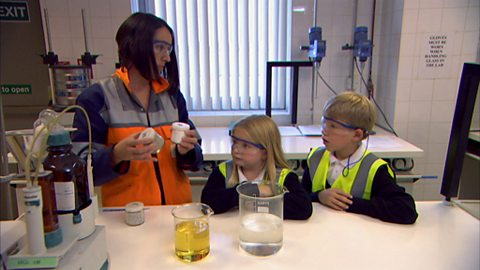
How are TV programmes made? video
Two children find out how TV programmes are made and how they reach your TV at home.
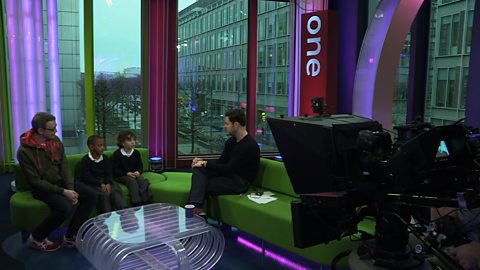
How are crayons made? video
With the help of Curious Cat, two children visit a crayon factory to find out how they are made.
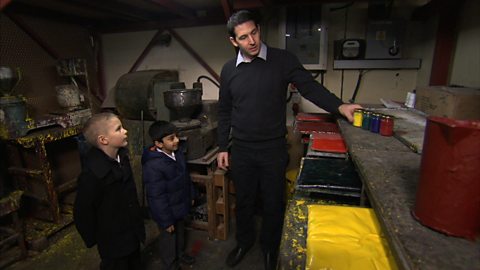
How are bricks made? video
With the help of Curious Cat, two children visit a brick factory to find out they bricks are made.
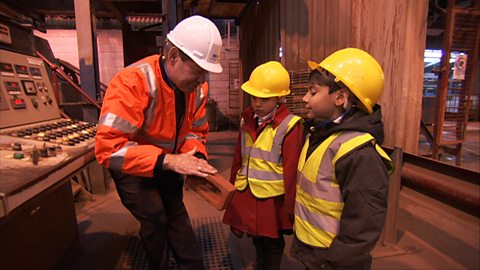
What happens to our sewage? video
Two children meet Curious Cat, an animated cat who asks them if they would like to find out what happens to our sewage once it leaves our homes.
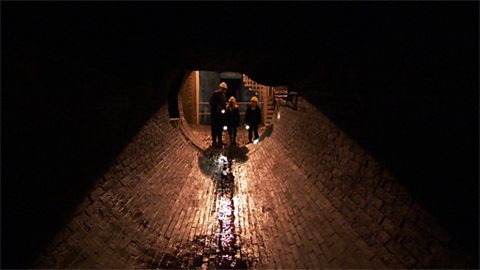
How is steel made? video
Curious Cat, an animated cat, asks two children if they’d like to find out how biscuit tins are made.
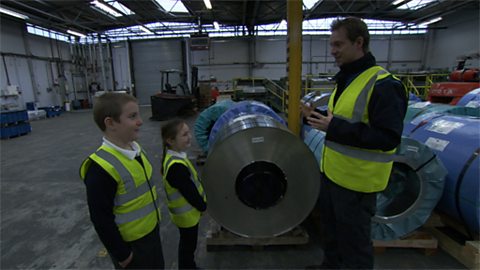
How is electricity made? video
Two children meet Curious Cat, an animated cat who asks them if they would like to find out how electricity is generated.
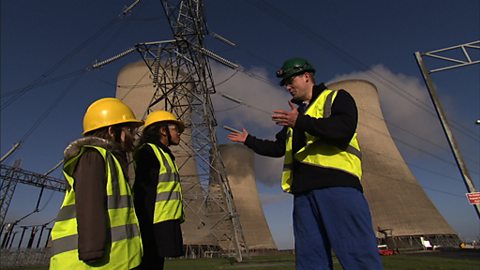
Ěý
Ěý